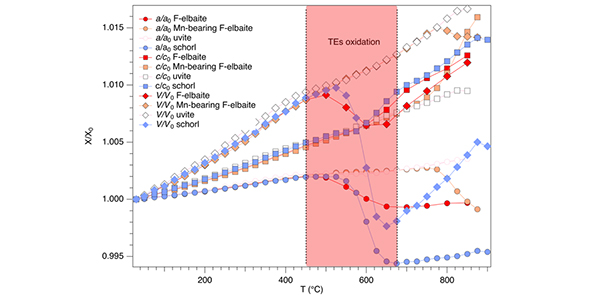Thermal behavior of schorl up to breakdown temperature at room pressure
DOI:
https://doi.org/10.13133/2239-1002/17859Abstract
Schorl is one of the most widespread tourmaline compositions in the world, known from many different geological settings. Its role as boron and water carrier has been moderately investigated together with its stability field. In this study, the richest schorl in Fe2+ content was investigated to constraint its breakdown temperature at room pressure through in situ powder X-Ray Diffraction (in situ pXRD), its breakdown products and the coupled thermally induced dehydrogenation-dehydrogenation process experienced approaching the breakdown conditions.
Schorl turned out to begin its breakdown at 850 °C with the first appearance of hematite, followed by a dominant B-mullite phase. The breakdown reaction of schorl can be expressed as follows: 2NaFe2+3Al6(BO3)3Si6O18(OH)=3Fe2O3+4/3Al9Si2BO19+(Na- Si- B-rich) glass+4H2O.
The breakdown process is completed at 950 °C, when no trace of residual tourmaline is found. Annealing the schorl at 450 °C in air was enough to set the Fe oxidation out, counterbalanced by the deprotonation reaction: (Fe2+)+(OH)- → (Fe3+)+ (O2-)+1/2H2(g).

Published
Issue
Section
License
Copyright (c) 2023 Periodico di Mineralogia

This work is licensed under a Creative Commons Attribution 4.0 International License.

